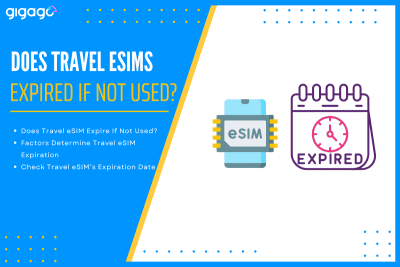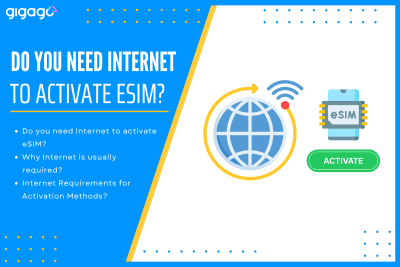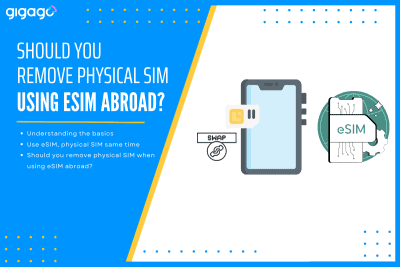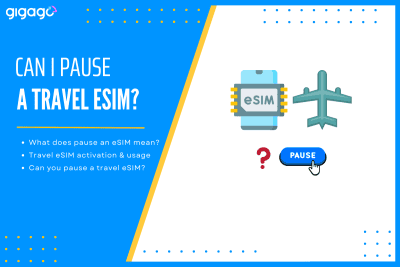Traveling abroad has become easier thanks to travel eSIMs, which let you connect to local networks instantly without the need for a physical SIM card. However, many travelers wonder: Does Travel eSIM Expire If Not Used? The short answer is YES. Travel eSIMs have strict expiration policies that can result in complete loss of your […]
Can eSIMs be tracked?
As eSIM technology becomes more common among travelers, many wonder: Can eSIMs be tracked? The short answer is yes, but it is not as straightforward as it might seem. eSIMs don’t make your phone more vulnerable than a regular SIM card. In fact, the ways tracking works are mostly the same, regardless of the type of SIM you are using. In this guide, we will break down how eSIM tracking works, who can track you, and what you can do to protect your privacy.
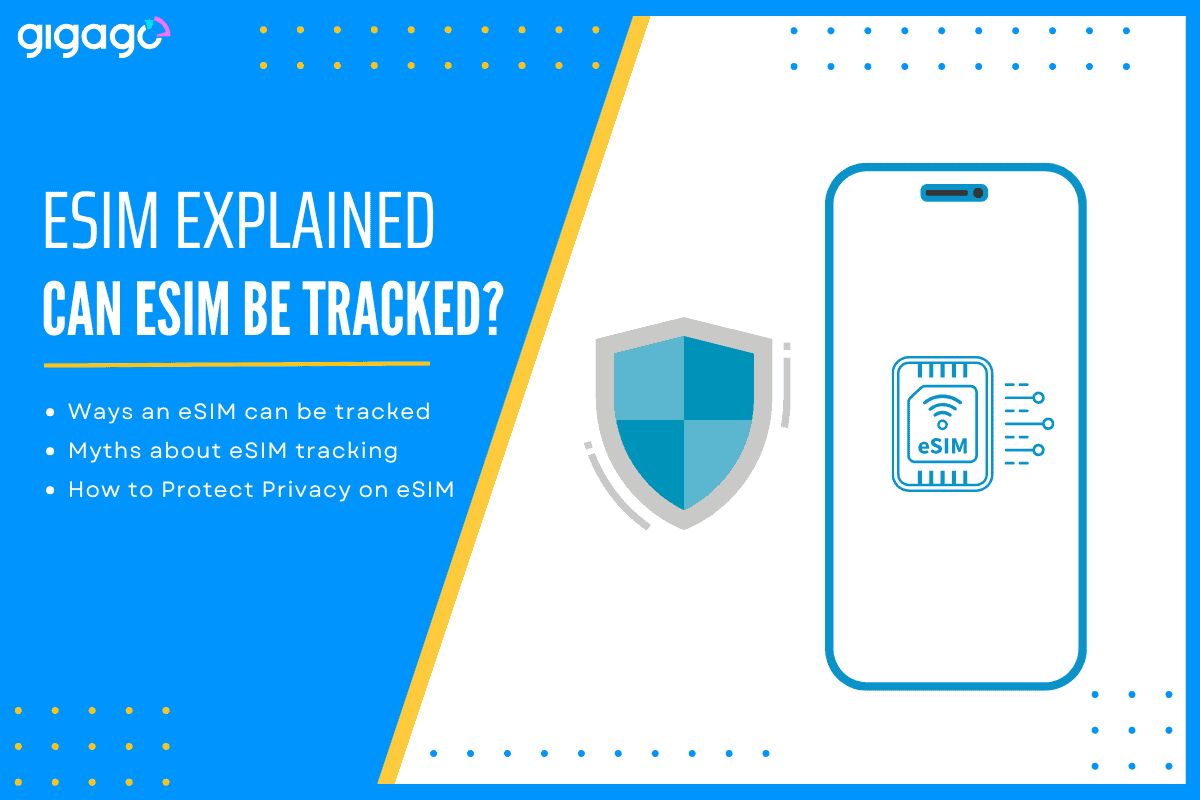
In this article
I. Understanding eSIM Technology
To understand tracking, we first need to know what an eSIM is and how it works.
An eSIM (embedded SIM) is a small chip built directly into your smartphone or tablet. Unlike traditional SIM cards that you physically insert, eSIMs are activated digitally, allowing you to switch mobile carriers without swapping cards. This makes them especially convenient for international travelers who want flexible and fast connectivity.
II. Can eSIMs Be Tracked?
Yes, eSIMs can be tracked – just like regular SIM cards. Tracking does not happen because you are using an eSIM. It happens because your phone connects to mobile networks, the internet, and apps that may use your location. This is the same for both eSIMs and physical SIMs.
When you use an eSIM to connect to a mobile network, your phone sends signals to cell towers and internet servers. These systems can figure out where you are or how you’re using your data — but this is normal and happens with all mobile phones.
So, using an eSIM does not make you easier or harder to track. What matters is how your phone connects and what services or apps you use.
III. 5 Ways an eSIM can be tracked
An eSIM does not make your phone any more trackable than a regular SIM. In fact, tracking works the same way for both. Here are five common ways your location or device activity can be tracked:
1. Through Your Mobile Network
Every time your phone connects to a nearby cell tower, your mobile carrier can estimate your location. This helps with providing service, billing, and preventing fraud.
2. Using Your Device’s IMEI Number
Your phone has a unique ID called an IMEI (International Mobile Equipment Identity). Authorities and mobile networks can use this number to track your phone, whether it is using a physical SIM or an eSIM.
3. Via GPS and Location Services
Apps like Google Maps, Uber, and others use GPS, Wi-Fi, or Bluetooth to figure out where you are. These methods don’t depend on your SIM, but if you’re using mobile data (including from an eSIM), that data can be used to send your location.
4. Through App Permissions and Online Accounts
Some apps ask for permission to access your location. If you allow it, they can track your movements while you’re using the app — or even in the background, depending on your settings. This is controlled by your phone’s privacy settings, not the eSIM.
5. By Government or Law Enforcement
In certain situations, authorities can request access to your mobile data and location from your carrier. This applies to all phones, whether they use a physical SIM or an eSIM.
IV. Who Can Track an eSIM?
An eSIM can be tracked in the same ways as a regular SIM. Here are the main parties who might be able to access your location or data:
- Mobile Network Providers: Your carrier can track your general location by connecting your phone to nearby cell towers. This helps with delivering service, billing, and protecting against fraud.
- Government Authorities: Law enforcement or national security agencies may request access to your location or data from your carrier, but only under legal circumstances, like during an investigation.
- Apps and Online Services: Apps like maps, weather, or ride-sharing services can track your location if you give them permission. This tracking is based on your device’s GPS, not the eSIM itself.
- Cybercriminals (in rare cases): In rare cases, hackers can track you if your device is infected with malware or if you install unsafe apps. This risk applies to all smartphones, no matter what kind of SIM they use.
V. Does eSIM improve privacy compared to physical SIMs?
While eSIMs don’t eliminate tracking, they do offer some security advantages over traditional SIM cards.
- No physical card to steal: eSIMs reduce the risk of SIM swap fraud – a scam where someone physically replaces your SIM to hijack your number.
- Remote management: You can activate or delete eSIM profiles remotely, giving you more control in case of theft or compromise.
- Multiple profiles: eSIMs let you switch between carriers, which can make it harder for third parties to track long-term location patterns.
- Secure onboarding: Many eSIM providers use two-factor authentication and identity verification (eKYC), making unauthorized access more difficult.
VI. How to Protect Your Privacy When Using eSIMs
Even though tracking is possible, you can take steps to protect your privacy while using eSIMs — especially when traveling.
- Disable location services when not needed: Turn off GPS, Wi-Fi scanning, and Bluetooth when they’re not in use. This reduces passive location tracking.
- Use a VPN: A VPN encrypts your internet traffic and hides your IP address, making it harder for websites and apps to track your location online.
- Manage app permissions: Regularly review which apps have access to your location and remove unnecessary permissions.
- Be cautious with apps and links: Only download apps from trusted sources like the App Store or Google Play. Avoid clicking unknown links that may lead to spyware.
- Use Airplane Mode when needed: Want to completely disconnect? Activate Airplane Mode to stop all network activity temporarily.
- Switch eSIM profiles if needed: If your phone supports it, changing eSIM profiles can help reduce long-term tracking via a single network.
VII. Is eSIM Tracking a Real Concern for Travelers?
For most travelers, eSIM tracking is not a serious risk — especially if you are using a trusted provider and follow basic privacy practices. The tracking that does occur is typically for connectivity, billing, or legal compliance.
That said, travelers who are privacy-conscious or visiting countries with strict surveillance laws might want to take extra precautions.
